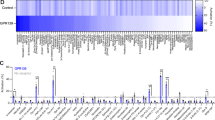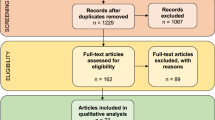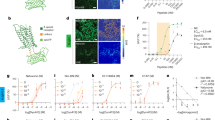Abstract
Since the discovery of opiate receptors in the central nervos system (CNS)1–3, it has become apparent that edogenous opiate ligands are involved in CNS function. Most attention has focused on their role in modulating pain, but they have also been implicated in various physiological functions and in disease states. We are concerned with evidence that endogenous opioid peptides may also contribute to the neurological deficits arising from cerebral ischaemia4,5. Dynorphin, which is widely distributed in the brain and pituitary6,7, has been reported to produce unusual motor and behavioural effects8–11 and may act as a regulatory neuropeptide, not as a classical opiate agonist or antagonist12–15. We have therefore administered to cats in which the right middle cerebral artery had been occluded both dynorphin (1–13) and analogue and control materials. We find that dynorphin (1–13) prolongs survival.
This is a preview of subscription content, access via your institution
Access options
Subscribe to this journal
Receive 51 print issues and online access
$199.00 per year
only $3.90 per issue
Buy this article
- Purchase on SpringerLink
- Instant access to full article PDF
Prices may be subject to local taxes which are calculated during checkout
Similar content being viewed by others
References
Pert, C. B. & Snyder, S. H. Science 179, 1011–1014 (1973).
Terenius, L. Acta pharmac. tox. 33, 377–384 (1973).
Simon, E. J., Hiller, J. M. & Edelman, I. Proc. natn. Acad. Sci. U.S.A. 70, 1947–1949 (1973).
Baskin, D. S. & Hosobuchi, Y. Lancet ii, 272–275 (1981).
Hosobuchi, Y., Baskin, D. S. & Woo, S. K. Science 215, 69–71 (1982).
Goldstein, A., Fischlin, W., Lowney, L. I., Hunkapiller, M. & Hood, L. Proc. natn. Acad. Sci. U.S.A. 78, 7219–7223 (1981).
Watson, S. J. et al. Science 216, 85–87 (1982).
Walker, J. M., Katz, R. J. & Akil, H. Peptides 1, 341–345 (1980).
Katz, R. J. Neuropharmacology 19, 801–805 (1980).
Herman, B. H., Leslie, F. & Goldstein, A. Life Sci. 27, 883–892 (1980).
Friedman, H. J., Jen, M. F., Chang, J. K., Lee, N. M. & Loh, H. H. Eur. J. Pharmac. 69, 357–360 (1981).
Tulunay, F. C., Jen, M. F., Chang, J. K., Loh, H. H. & Lee, N. M. J. Pharmac. exp. Ther. 219, 296–298 (1981).
Lee, N. M. & Smith, A. P. Trans. pharmac. Sci. 5, 108–110 (1984).
Wen, H. L. & Ho, W. K. K. Eur. J. Pharmac. 82, 183–186 (1982).
Jen, M. F., Garzon, J., Loh, H. H. & Lee, N. M. Eur. J. Pharmac. 91, 95–99 (1983).
O'Brien, M. & Waltz, A. Stroke 4, 201–206 (1973).
Zambramski, J. M. et al. Stroke 15, 621–627 (1984).
Han, D. et al. Cerebral Vascular Diseases (eds Reivich, M. & Hurtig, H. I.) 409–420 (Raven, New York, 1983).
Ramkisson, R. A. J. clin. Path. 19, 479–481 (1966).
Heyman, M. A., Payne, B. D., Hoffman, J. I. & Rudolph, A. M. Prog. cardiovasc. Dis. 20, 55–79 (1977).
Kastin, A. J., Olson, R. D., Schally, A. V. & Coy, D. H. Life Sci. 25, 401–414 (1979).
Meisenberg, G. & Simmons, W. H. Life Sci. 32, 2611–2623 (1983).
Rapoport, S. I., Klee, W. A. A., Pettigrew, K. D. & Ohon, K. Science 207, 84–86 (1980).
Author information
Authors and Affiliations
Rights and permissions
About this article
Cite this article
Baskin, D., Hosobuchi, Y., Loh, H. et al. Dynorphin(1–13) improves survival in cats with focal cerebral ischaemia. Nature 312, 551–552 (1984). https://doi.org/10.1038/312551a0
Received:
Accepted:
Issue date:
DOI: https://doi.org/10.1038/312551a0
This article is cited by
-
Complement C3 Enhances LPS-Elicited Neuroinflammation and Neurodegeneration Via the Mac1/NOX2 Pathway
Molecular Neurobiology (2023)
-
Spinocerebellar ataxia type 23 (SCA23): a review
Journal of Neurology (2021)
-
Effects of halothane, α-chloralose, and pCO2 on injury volume and CSF β-endorphin levels in focal cerebral ischemia
Molecular and Chemical Neuropathology (1997)
-
U50488 reduces the severity of tissue damage in a rabbit model of focal cerebral ischemia
Molecular and Chemical Neuropathology (1994)



